James Maccormick: Architect of World Expo 88
By Anna Thurgood, Engagement Officer | 14 June 2023
James Maccormick graduated from architecture at the University of Melbourne in 1950 before leaving Australia to work overseas. In 1964 he became the Principal Architect for the federal Department of Housing and Construction, also known as the Department of Public Works, in Canberra. It was in this role that Maccormick submitted a ‘notional design’ for an Australian pavilion at World Expo 67 in Montreal after the federal government decided to re-enter the world of international expositions after a three-decade absence. Maccormick’s design impressed Cabinet and he was given the job.
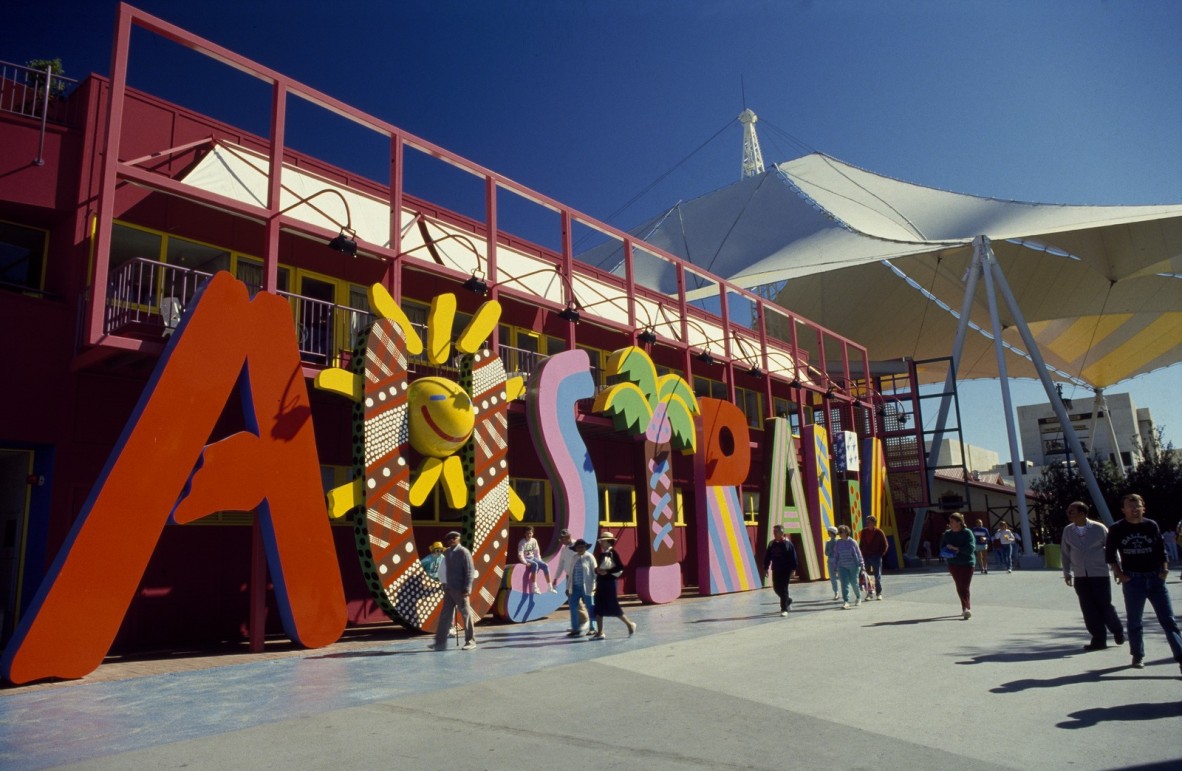
Australian pavilion at Expo ’88 in South Bank, Queensland, 1988. Photograph by Noel Pascoe. Image no. 10028-0002-0004. John Oxley Library, State Library of Queensland.
Australia’s presence at Expo 67 was so successful, Maccormick was tasked with designing another Australian pavilion at Expo 70, held in Osaka, Japan. It was during this period that he completed his last project for the federal government, the Defence Complex at Campbell Park in Canberra, now a highly regarded example of Brutalist architecture.
In 1969 his next appointment brought him to Brisbane as University Architect for the University of Queensland, a prestigious position previously held by James Birrell, who had left in 1966. During Maccormick's tenure he was again seconded to the federal government to oversee Australia’s contribution to another expo - Expo 74 held in Spokane, Washington, in the United States of America.
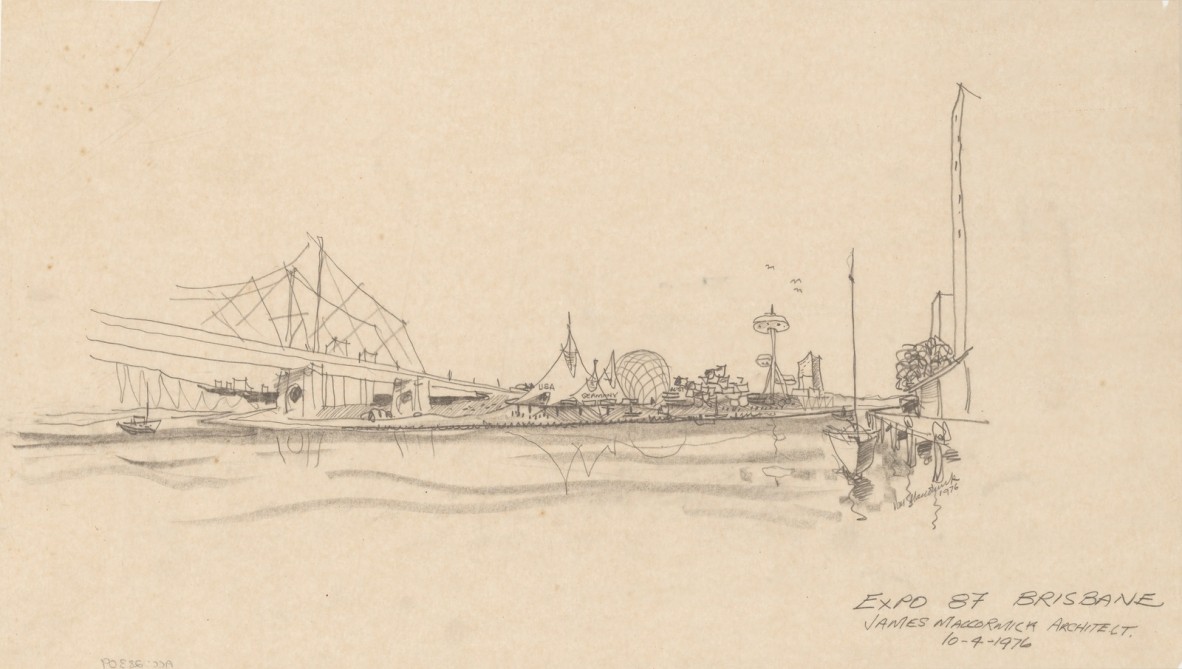
Expo 87, [Kangaroo Point] Brisbane, 1976. James Maccormick. Item no. 28309-3. John Oxley Library, State Library of Queensland.
Around this time, Maccormick began toying with the notion of Brisbane hosting an international exposition. With his recent experience of and involvement in world expositions, he believed Brisbane was an ideal location. It would not only boost Brisbane's economic and cultural fortunes it would also be a catalyst to bring forward the redevelopment of Kangaroo Point, which at that time was still a highly industrialised area occupying its own bend of Brisbane River, yet in the heart of the city.
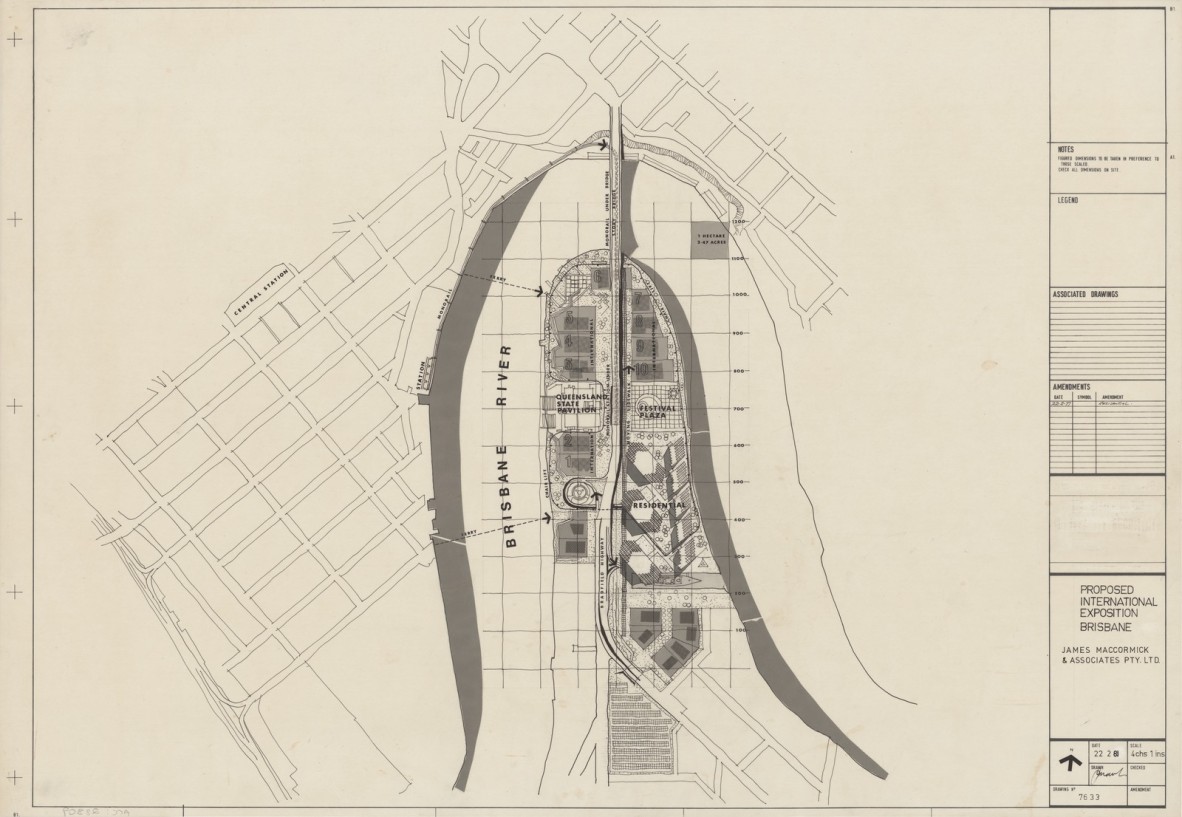
Site plan for the proposed international exposition at Kangaroo Point, Brisbane, 1981. James Maccormick. Item no. 28309-12. John Oxley Library, State Library of Queensland.
Maccormick began enlisting the support of key government and business leaders. He also realised that Australia’s bicentenary year would be an ideal moment for Brisbane to host an Expo. When he left University of Queensland and established his own practice in 1978, his lobbying began in earnest talking to politicians, business leaders and academics as well as appearing on television and radio to raise public awareness and support. Eventually, he won over Queensland Premier Joh Bjelke-Petersen who saw the potential and opportunities an Expo could bring, particularly at a time when the Commonwealth Games had been so successful for Brisbane and Queensland more broadly.
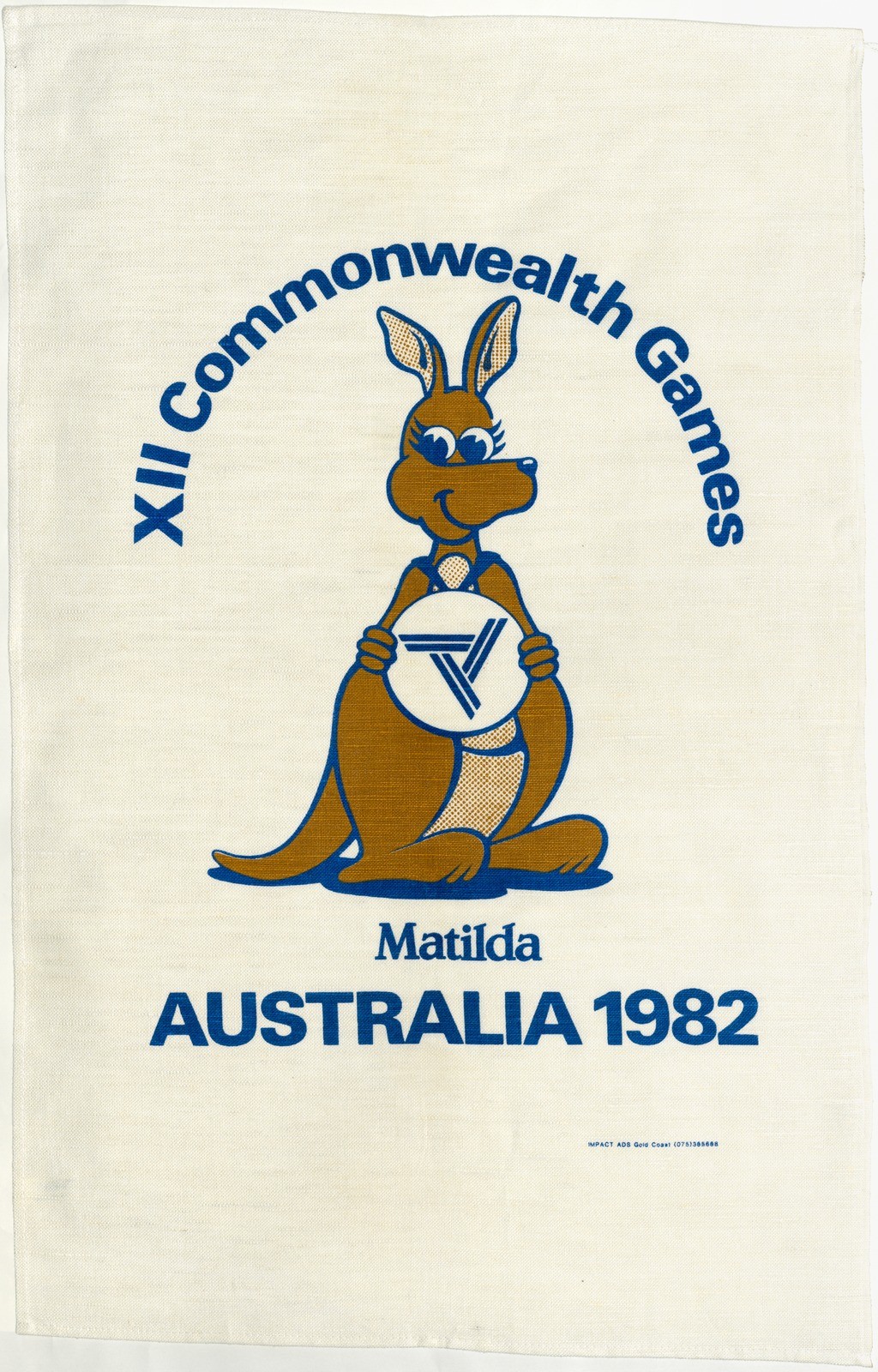
XII Commonwealth Games tea towel, c.1982. Impact Ads. Item 74 from Glenn R. Cooke Souvenir Textiles Collection. John Oxley Library, State Library of Queensland.
Whilst Prime Minister Malcolm Fraser initially rejected the idea of hosting a World Expo as part of Australia’s bicentenary celebrations, Maccormick and Bjelke-Petersen secured support from acting Prime Minister Doug Anthony while Fraser was out of the country and they wasted no time in making a direct approach to the International Expo Authority, ultimately securing the rights to host World Expo 88 in Brisbane. The Premier’s approach was this would be a ‘free enterprise’ event, with ticket sales, sponsorship and eventual sale of the site minimising, even offsetting, public expenditure.
![Master Plan [South Brisbane site], proposed Queensland Exposition 1988, 1981. Drawing by James Maccormick.](/sites/default/files/styles/slq_standard/public/28309-5%20Proposed%20master%20plan%20Expo%2088.jpg?itok=oyXXMuhH)
Master Plan [South Brisbane site], proposed Queensland Exposition 1988, 1981. James Maccormick. Item no. 28309-5. John Oxley Library, State Library of Queensland.
The approved site was moved to South Brisbane, also a run-down and still highly industrialised inner-city area, but arguably more easily accessible from the CBD. The subsequent demolition of most buildings on the 40 hectare site displaced low-income and vulnerable groups as well as sweeping many small businesses aside.
James Maccormick realised that while he had experience with expositions, he needed a partner to deliver such a large and significant project. His friend and fellow architect Graham Bligh had a much larger practice and the necessary resources, and so Bligh Maccormick 88 was established. They were soon appointed master architects for the World Expo 88 project.
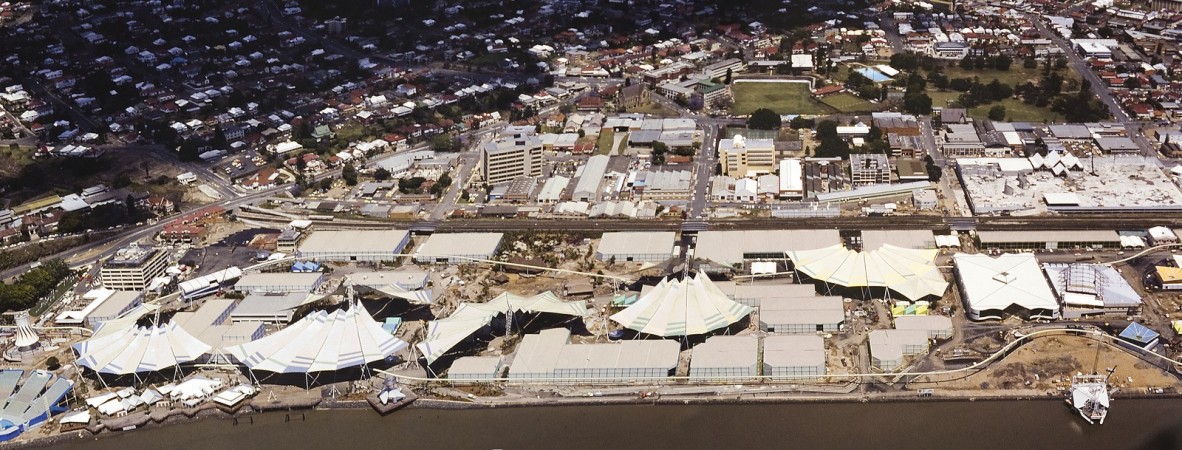
Aerial view of Expo 88 buildings under construction at South Brisbane, 1987. Photograph by Brian Hand. Image no. 31956-0001-0016. John Oxley Library, State Library of Queensland.
The built form of the site comprised a series of eight giant ‘sun sail’ structures that evoked the festive spirit of circuses or shows without being enclosed. At night, the sails were lit and served as giant projection screens. A monorail transported the more than 15 million visitors around the site which also featured a pink submarine, and a giant Sky Needle acting as a beacon and landmark. Expo 88 was undoubtedly a huge success, far exceeding visitation forecasts and is now widely credited with changing the landscape, both built and cultural, of Brisbane forever.
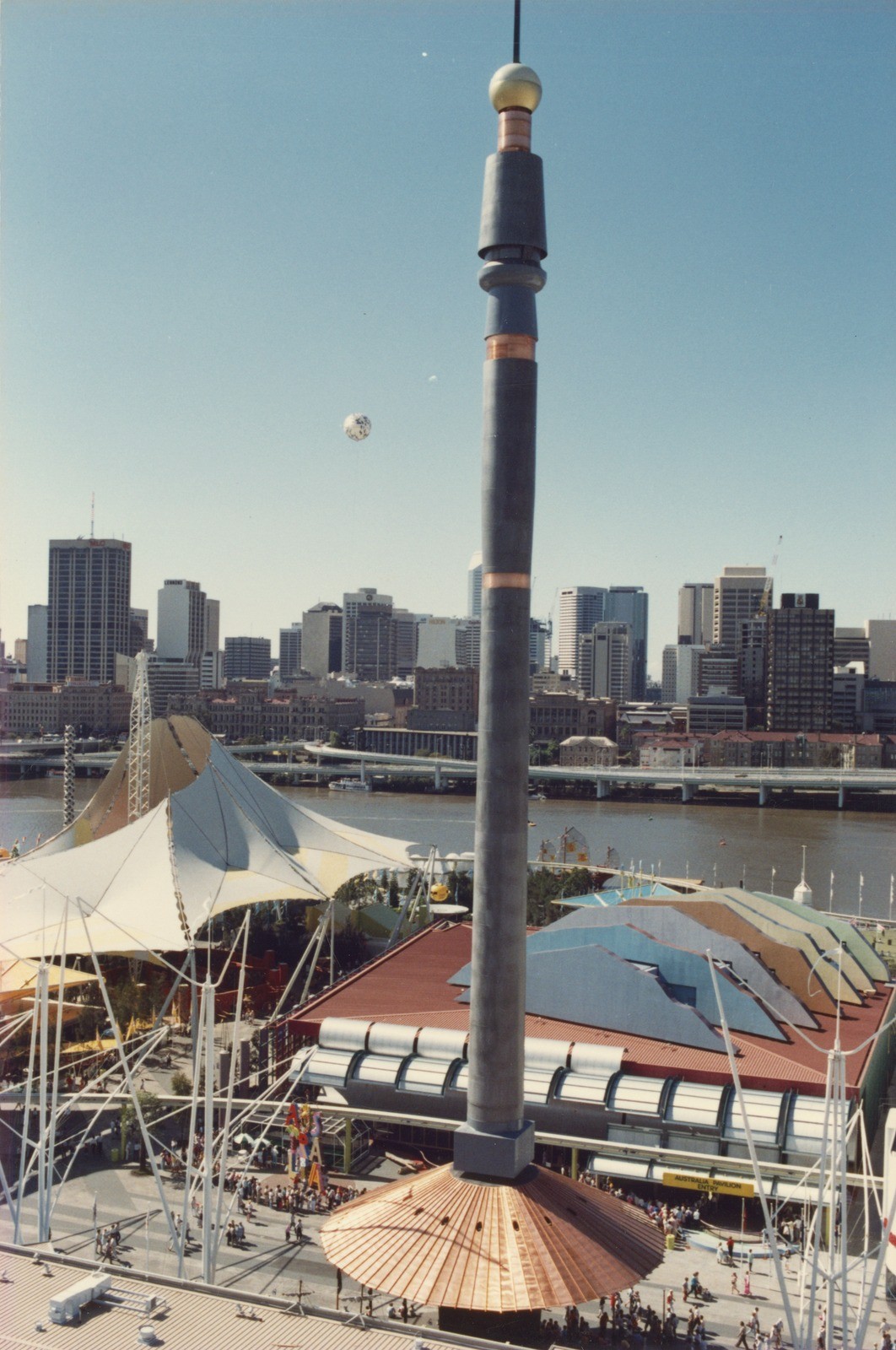
Sky Needle at World Expo 88 in South Bank, Queensland, 1988. Photograph by Noel Pascoe. Image no. 10028-0001-0033. John Oxley Library, State Library of Queensland.
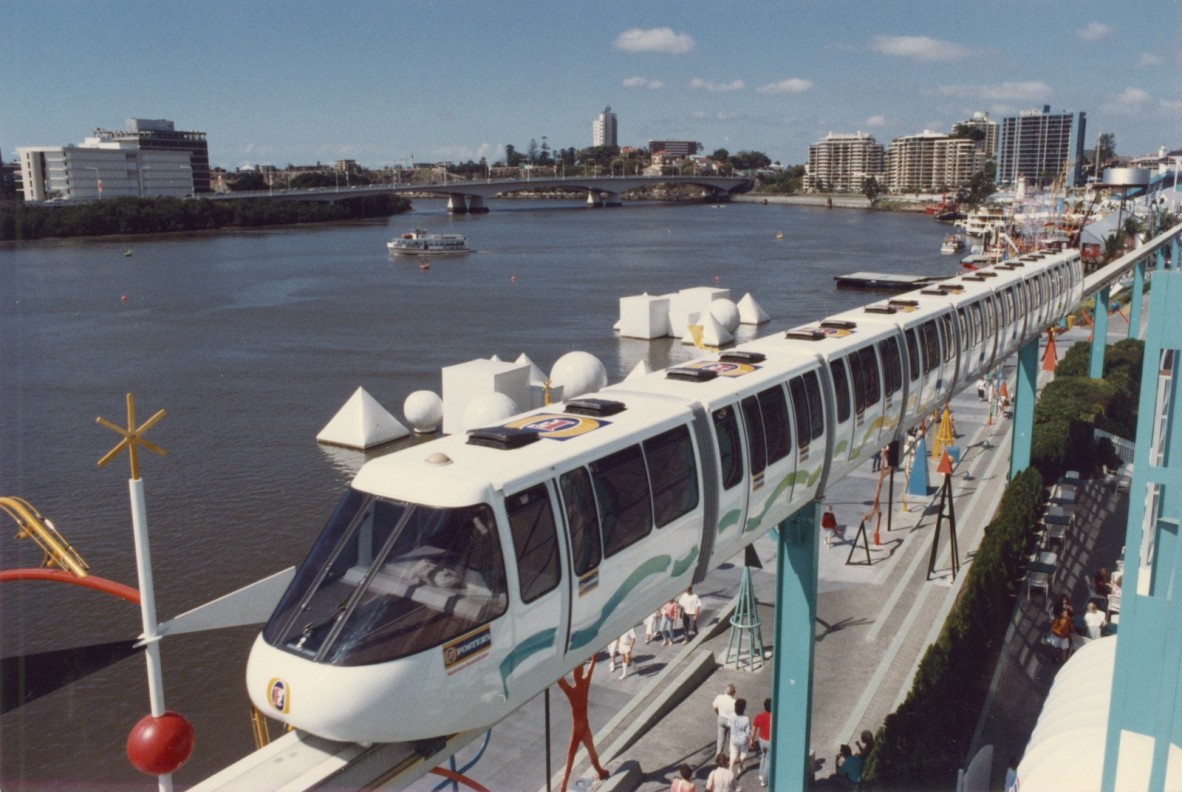
Monorail at Expo ’88 in South Bank, Queensland, 1988. Photograph by Russell Brown. Image no. 10028-0001-0029. John Oxley Library, State Library of Queensland.
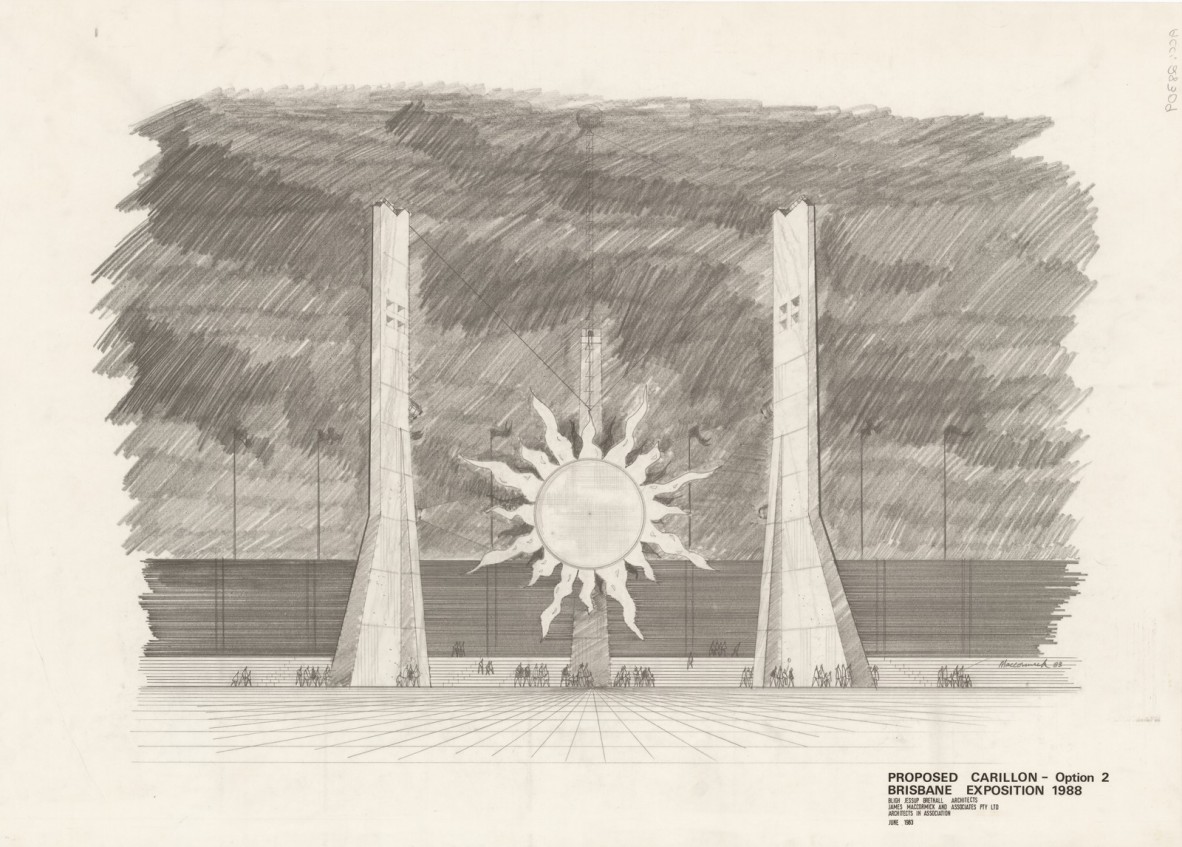
Proposed Carillon – option 2, Brisbane Exposition 1988, 1983. James Maccormick. Item no. 28309-4. John Oxley Library, State Library of Queensland.
In 2012 James Maccormick donated his collection to State Library of Queensland in two parts, the first mainly comprising correspondence related to his advocacy for World Expo 88. The second part contained large site plans and drawings, including some of Maccormick's early concepts focused on Kangaroo Point. They are now combined into a single collection.
James Maccormick was appointed as a Member of the Most Excellent Order of the British Empire (MBE) following his contribution to Expo 67 in Montreal, and later, in 2013, awarded a Medal of the Order of Australia (OAM). He passed away in 2021.
A selection of James Maccormick's correspondence and original drawings will be on display at State Library in the Extraordinary Stories exhibition, on level 4, from late June 2023. To discover more about this extraordinary man and his significant contribution to the built landscape and culture of Queensland, explore the resources below.
Other blog articles
- New acquisition: James Maccormick correspondence regarding the birth of World Expo 88, March 2012
- More Expo 88 material from James Maccormick, May 2012
- James Maccormick digital story and the 25th anniversary of World Expo 88, April 2013
- James Maccormick Expo 88 plans now digitised! July 2013
- Flashback: World Expo 88, April 2018
Research guide
Learn more about James Maccormick and other significant Queensland architects by visiting our Queensland architecture research guide.
Collection resources
Comments
Your email address will not be published.
We welcome relevant, respectful comments.